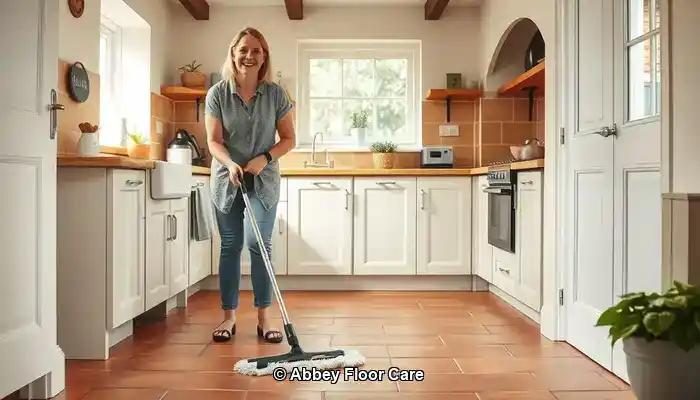
Last Updated on September 29, 2025 by David
Essential Techniques for Keeping Your Terracotta Floors Spotless
-
- Terracotta is known for its significant porosity, making it susceptible to quick dirt buildup, particularly in humid environments like Surrey.
- Effective sealing is crucial to shield the tile’s surface from moisture and grime infiltration.
- Consistent maintenance is vital—daily sweeping followed by weekly mopping with pH-neutral cleaners retains the tile’s visual appeal.
- <b>Avoid harsh chemicals and steam mops</b>, as these can damage the sealant and adversely affect the tile.
- Opt for eco-friendly cleaning solutions, especially in homes with children or pets.
- Engaging professional restoration services offers thorough cleaning and resealing, ensuring long-lasting protection.
- Utilizing rugs and mats strategically in high-traffic zones can effectively reduce dirt transfer.
- Managing moisture effectively is essential—ensuring proper ventilation and swiftly addressing spills can help avert staining and mould growth.
Understanding Why Terracotta Floors Get Dirty Quickly
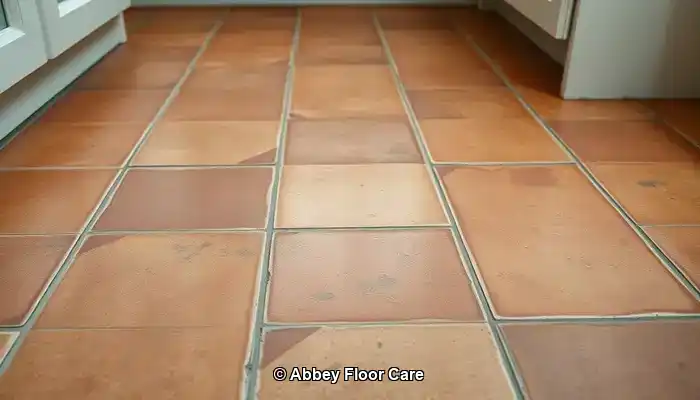
Terracotta tiles are an appealing flooring choice, particularly in traditional and rustic-style residences throughout Surrey. These tiles offer warm hues and natural textures that enhance the character and charm of any interior space. However, despite their aesthetic benefits, terracotta is notorious for its quick accumulation of dirt. Understanding the fundamental causes behind this issue is essential for implementing effective cleaning and maintenance strategies that will prolong the life and beauty of your floors.
Expert Tip: Best Products for Everyday Terracotta Care
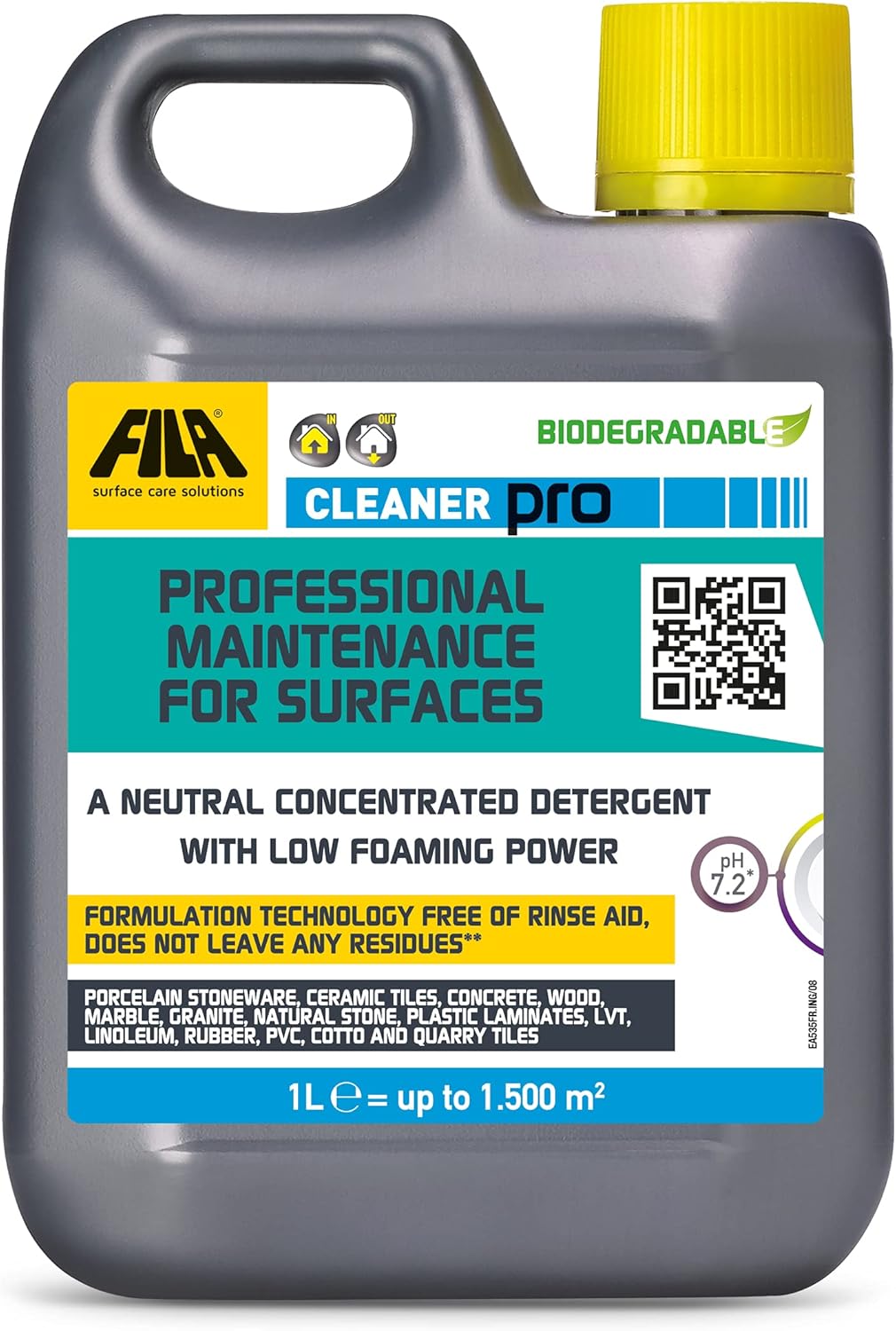
Fila Pro Floor Cleaner
|
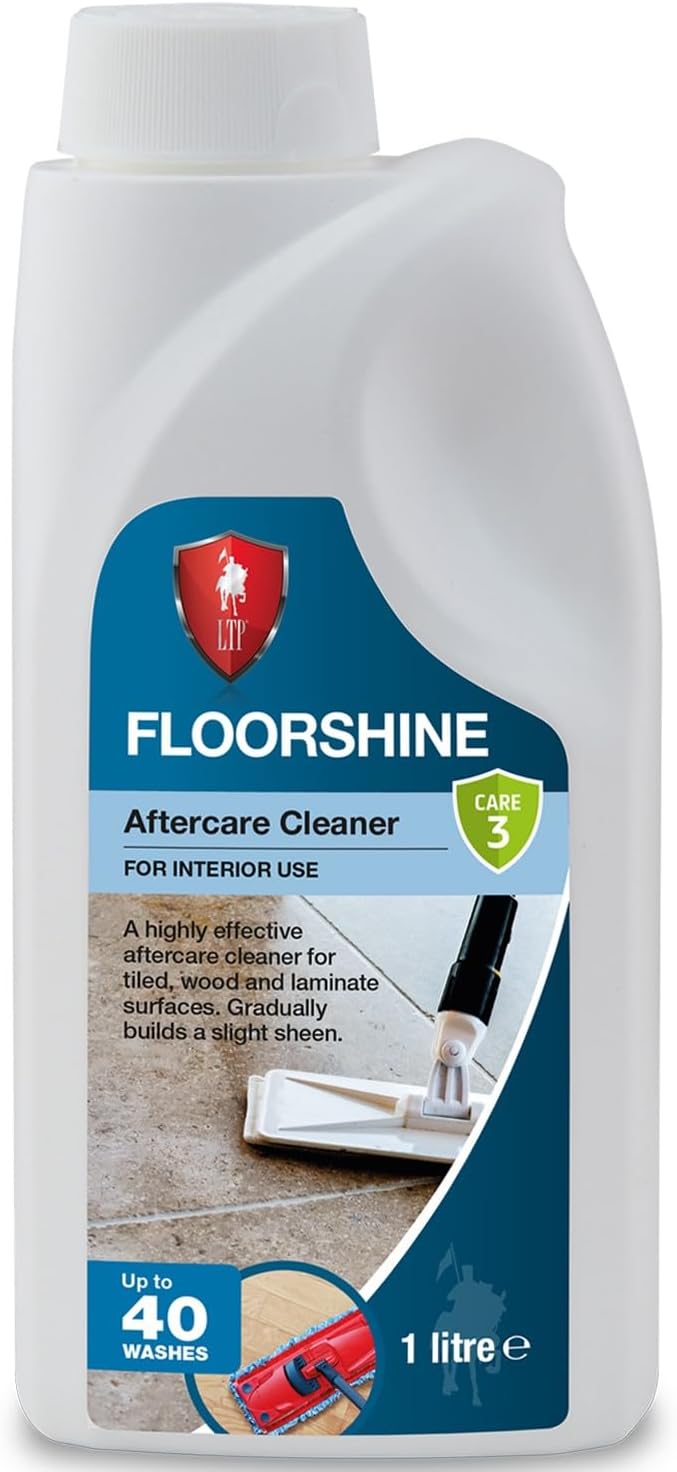
LTP Floorshine
|
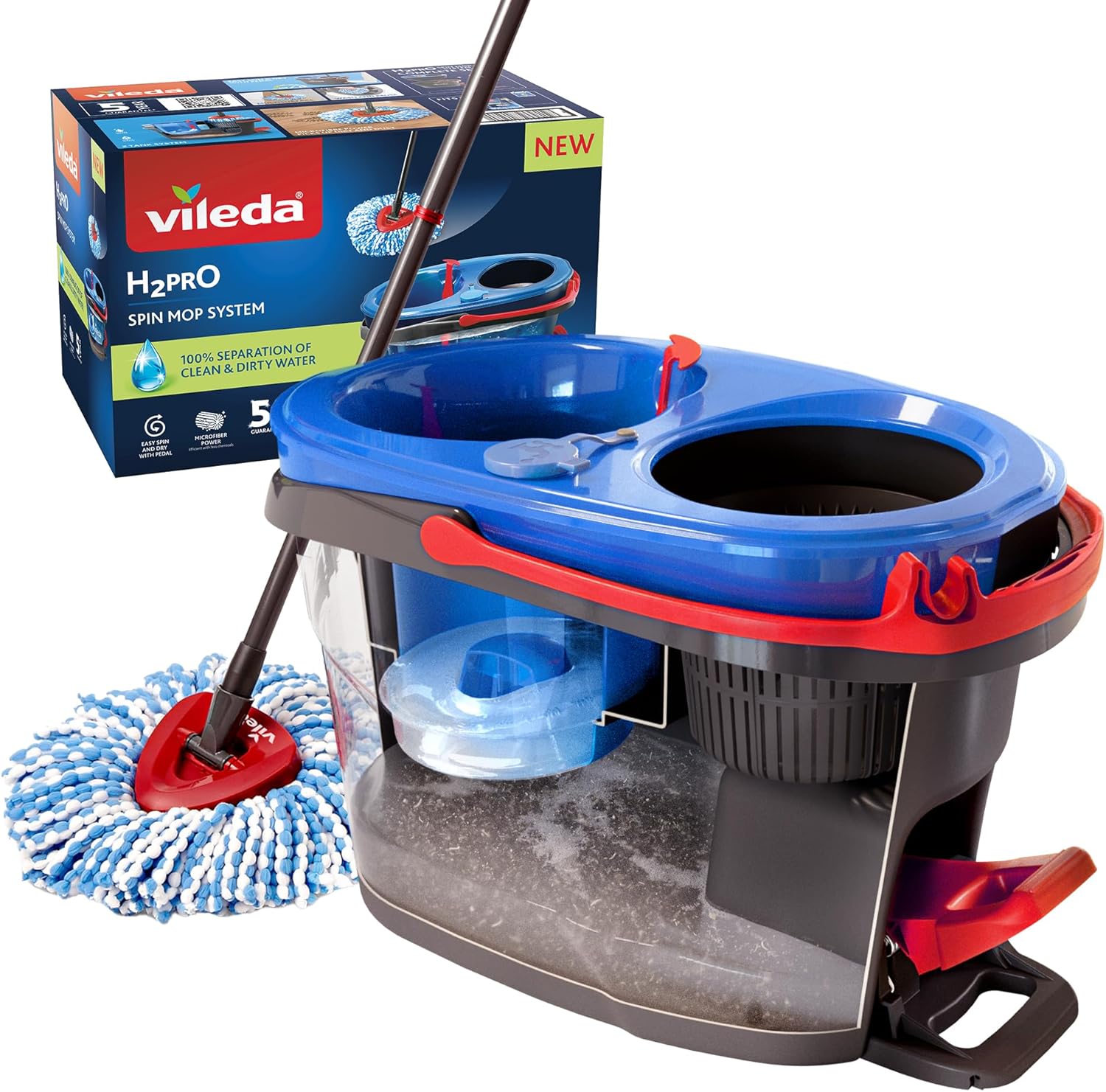
Vileda H2PrO Spin Mop System
|
Exploring Porosity: The Core Reason for Quick Dirt Accumulation
Terracotta is crafted from natural clay and is fired at lower temperatures compared to other types of tiles. This distinct manufacturing method results in a highly porous surface that absorbs moisture, oils, and dirt with ease, much like a sponge. Regular foot traffic allows grime to penetrate deeply into the tile, making it significantly more challenging to remove through standard cleaning practices.
Unsealed terracotta tiles are especially susceptible to dirt. Without a protective barrier, even small spills or muddy footprints can create long-lasting stains. Over time, this leads to a dull and marked appearance that can be difficult to restore without professional intervention.
Influence of Surrey’s Climate on Terracotta Cleanliness
The weather conditions in Surrey significantly affect how quickly terracotta floors accumulate dirt. Due to the region’s frequent rainfall and humid climate, there is a higher chance of moisture being tracked indoors, especially in entryways and conservatories.
Homes situated near wooded areas or gardens face an even greater risk. Soil, pollen, and organic debris can easily be introduced onto terracotta surfaces, especially if footwear is not removed when entering the house.
Daily Habits That Contribute to Increased Dirt Accumulation
Aside from environmental conditions, daily habits can exacerbate the dirt issue. Using inappropriate cleaning products—such as acidic solutions or bleach—can strip away protective coatings and damage the tile’s surface. While steam mops are popular for cleaning, they often push moisture deep into the tile, worsening the situation.
High-traffic areas, such as kitchens and hallways, naturally experience more wear and tear. Without consistent sweeping and mopping, dirt can accumulate quickly and embed itself into the tile’s texture, making it harder to remove over time.
Effective Preventative Strategies for Keeping Your Terracotta Clean
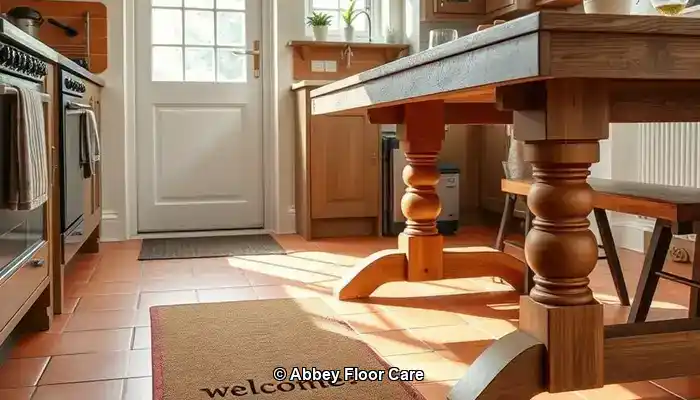
Preserving clean terracotta floors requires a proactive approach rather than merely responding to dirt as it surfaces. In homes across Surrey, where wet weather and garden access are prevalent, implementing preventative measures is crucial to maintain the natural allure of terracotta tiles.
Sealing: Your First Line of Defense Against Dirt and Stains
The most effective way to prevent terracotta from becoming dirty too quickly is by ensuring proper sealing. A high-quality, breathable sealant provides a protective barrier that repels moisture, oils, and grime. In Surrey properties, where humidity levels can vary, sealing is essential to prevent water absorption that may lead to staining and mould development.
Experts recommend resealing terracotta tiles every 12 to 18 months, depending on foot traffic and exposure. In areas like kitchens, hallways, and conservatories—those that experience daily activity—more frequent resealing may be necessary. Always select a sealant specifically designed for porous stone and avoid glossy finishes that can trap dirt on the surface.
Strategically Placing Rugs and Mats to Reduce Dirt Transfer
Carefully positioning rugs and mats can significantly lessen the amount of dirt that reaches your terracotta floors. Employ durable doormats at entrances to capture mud and moisture before they have the chance to spread indoors. In high-traffic spaces like hallways or under dining tables, area rugs can act as a protective barrier against wear and tear.
For areas that lead outdoors, consider using washable runners that can be easily cleaned. These not only protect the tiles but also add warmth and style to your living space.
Effectively Managing Moisture in Homes Across Surrey
The damp climate of Surrey is known for its frequent rainfall, which can accelerate the accumulation of dirt on terracotta. To counteract this, it’s crucial to use dehumidifiers in enclosed areas and ensure proper ventilation throughout your home. Always clean up spills immediately and avoid leaving wet items—such as shoes or towels—on the floor.
If your terracotta is installed in a conservatory or garden room, consider adding blinds or UV filters to reduce condensation and potential sun damage. These small adjustments can have a significant impact on the longevity of your tiles.
By integrating sealing, smart design choices, and effective moisture management, homeowners in Surrey can greatly slow down the rate at which terracotta floors become dirty. In the following section, we will examine the most effective cleaning practices to maintain a fresh and natural appearance day in and day out.
Optimal Cleaning Techniques for Terracotta Tiles
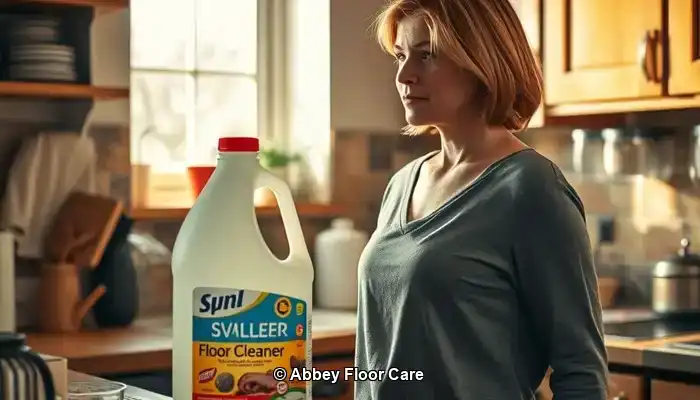
Even with proper sealing and preventive measures, terracotta floors require regular maintenance to preserve their natural allure. The key lies in employing the right techniques and products that can efficiently clean without harming the porous surface of the tile.
Establishing a Daily and Weekly Cleaning Routine for Terracotta
In homes throughout Surrey, where outdoor elements frequently enter, it is essential to sweep or vacuum daily. Use a soft-bristle broom or a vacuum with a hard floor setting to effectively remove dust, grit, and organic debris before they embed themselves into the tile.
For weekly cleaning, mop using warm water along with a <a href="https://limitsofstrategy.com/ph-neutral-cleaners-essential-choices-for-stone-floors/">pH-neutral cleaner</a> specifically formulated for natural stone. Avoid soaking the floor; damp mopping is the most effective method. Excessive water can seep into the tile and cause staining or mould growth, particularly in older or poorly sealed installations.
Choosing the Right Cleaning Products for Terracotta Surfaces
Select cleaning products that are both gentle and effective. Look for labels that specify “stone-safe,” “non-acidic,” or “pH-neutral.” In Surrey, where eco-friendly living is highly valued, many residents prefer biodegradable cleaners that are safe for both pets and children.
Avoid multi-surface cleaners that contain bleach, ammonia, or citrus extracts, as these can strip away sealants and etch the terracotta, making it more susceptible to future staining.
For stubborn stains, use a soft cloth alongside a diluted stone cleaner solution. Never scrub with abrasive pads or wire brushes, as these can scratch the surface and complicate future cleaning efforts.
Cleaning Practices to Avoid for Terracotta Floors
Although steam mops may seem like a convenient option, they are unsuitable for terracotta. The high temperatures and moisture can penetrate the tile, weakening the sealant and causing long-term harm. Likewise, acidic cleaners such as vinegar or lemon juice—even if diluted—can erode the tile’s surface and cause discoloration.
Stick to gentle cleaning techniques and always test new products on a small, inconspicuous area before applying them across the entire floor.
Weighing Professional Care Against DIY Maintenance for Terracotta
For the upkeep of terracotta floors, many homeowners in Surrey often start with DIY methods. While regular sweeping and mopping are beneficial, there comes a point when professional care becomes not just helpful, but essential.
When to Consult a Surrey Tile Specialist for Care
If your terracotta tiles exhibit signs of deep staining, uneven color, or surface wear, it may be time to reach out for expert assistance. Professional tile care specialists in Surrey utilize advanced equipment and stone-safe products that reach deeper than typical household cleaners. They can also evaluate whether your sealant has deteriorated and suggest an appropriate resealing schedule based on your home’s specific conditions.
Restoration services frequently encompass deep cleaning, stain removal, and the reapplication of breathable sealants that protect the tiles without altering their natural appearance. For older homes or heritage properties, specialists can even match the original finish to maintain authenticity.
Cost vs Longevity: The Value of Professional Help
While DIY cleaning may seem more budget-friendly, it often results in short-lived outcomes. Without adequate sealing and deep cleaning, dirt continues to accumulate, necessitating more frequent maintenance and risking permanent damage.
Conversely, professional care can significantly prolong the lifespan of your terracotta floors. A single restoration session can revitalize color, eliminate embedded grime, and safeguard the surface for months or even years. In high-traffic areas like kitchens or hallways, this investment can lead to considerable savings in reduced maintenance and improved visual appeal.
Homeowners in Surrey who prioritize long-term property maintenance and aesthetic value frequently find that expert services offer peace of mind along with superior results. Moreover, many local providers present eco-friendly options and tailored maintenance plans designed to fit your lifestyle.
Eco-Friendly and Safe Cleaning Solutions for Terracotta Care
The natural beauty of terracotta deserves care that is equally environmentally friendly. For homeowners in Surrey who wish to maintain clean floors without compromising health or sustainability, eco-friendly cleaning solutions represent the perfect choice. Fortunately, modern products and techniques simplify the process of safeguarding your tiles—and your household—without resorting to harsh chemicals.
Choosing Non-Toxic Sealants and Cleaners
Conventional sealants often contain solvents that emit volatile organic compounds (VOCs), which can linger in the air and adversely affect indoor air quality. Contemporary eco-friendly alternatives utilize low-VOC, water-based formulas that are safe for use around children and pets.
When selecting a cleaner, look for labels that indicate “biodegradable,” “plant-based,” or “stone-safe.” These products are formulated to lift dirt without damaging the porous surface of terracotta. Brands that specialize in natural stone care frequently offer concentrated solutions that can be diluted for everyday use, thereby minimizing waste and packaging.
Safe Cleaning Alternatives for Households with Pets and Children
In bustling Surrey homes, prioritizing the safety of all family members is just as important as cleanliness. Avoid using bleach, ammonia, and acidic cleaners like vinegar, which can harm the tile and pose risks to pets and young children. Instead, opt for gentle formulas derived from coconut oil, citrus enzymes, or mineral-based components.
For those who enjoy DIY solutions, a simple mixture of warm water with a few drops of castile soap can be surprisingly effective for light cleaning tasks. Just ensure to test any homemade solution on a small area first to confirm it doesn’t affect the sealant or finish.
Adopting Sustainable Cleaning Practices
Eco-friendly maintenance extends beyond the products utilized—it involves habits as well. Use reusable microfiber cloths and mops instead of disposable pads. Regular sweeping can reduce the need for frequent wet cleaning. When resealing, choose products with recyclable packaging and minimal environmental impact.
Numerous floor care professionals in Surrey now offer green cleaning packages, employing certified non-toxic products and sustainable methods. If you’re uncertain where to begin, booking a consultation with a local expert can help you establish a routine that is both effective and environmentally friendly.
Ensuring the Lasting Beauty of Your Terracotta Floors
Terracotta flooring infuses warmth, character, and timeless elegance into homes in Surrey. However, due to its porous nature, it requires thoughtful care to maintain cleanliness and vibrancy. By understanding the reasons behind the swift accumulation of dirt on terracotta, ensuring proper sealing, and adopting intelligent cleaning practices, you can significantly decrease grime buildup and extend the lifespan of your tiles.
Whether you are managing a busy household or restoring a heritage property, consistency is key. Daily sweeping, using pH-neutral cleaning solutions, and seasonal resealing contribute immensely to the upkeep of a well-maintained surface. When stains or signs of wear begin to surface, do not hesitate to seek professional restoration services.
Utilizing eco-friendly products and safe cleaning routines ensures your floors remain stunning without compromising health or environmental integrity. With the right approach, terracotta can continue to be a remarkable feature in your home for many years to come.
Ready to safeguard your floors intelligently? Contact us today for expert terracotta maintenance specifically tailored to the unique conditions of Surrey. Let’s work together to keep your home looking its best—naturally.
Common Questions About Terracotta Maintenance Answered
Terracotta floors are classic, yet they have specific care requirements. Below are answers to the most frequently asked questions from homeowners in Surrey who wish to keep their tiles clean, protected, and visually appealing.
How Often Should I Reseal My Terracotta Tiles?
In most Surrey homes, terracotta should be resealed approximately every 12 to 18 months. However, this timeframe may vary based on factors such as foot traffic, moisture exposure, and whether the tiles are situated indoors or outdoors. Areas such as kitchens, hallways, and conservatories may require more frequent resealing. If your tiles start to absorb water or appear dull, it is time to reseal.
Can I Use Vinegar or Bleach on Terracotta?
No—vinegar, bleach, and other acidic or harsh cleaners can harm terracotta. These substances break down sealants and etch the tile surface, resulting in permanent discoloration. Always use pH-neutral, stone-safe cleaners specifically formulated for porous flooring.
What Type of Mop is Best for Cleaning Terracotta Floors?
A microfiber mop is the most suitable choice. It effectively captures dust and dirt without scratching the surface and uses minimal water, which is essential for porous tiles like terracotta. Avoid sponge mops or steam mops, which can oversaturate the tile and weaken the sealant.
Is It Safe to Use DIY Cleaning Solutions?
Yes, but with caution. A mild mixture of warm water and castile soap can be effective for light cleaning tasks. Always test any homemade solution on a small, hidden area first. Avoid anything acidic or abrasive, and never apply homemade cleaners to unsealed tiles.
What Should I Do If My Tiles Have Already Stained?
If stains have set in, seeking professional restoration is your best course of action. Tile care specialists based in Surrey can perform deep cleaning, remove embedded grime, and reseal the surface to restore the tile’s original color and texture. DIY methods may exacerbate the damage if inappropriate products are used.
The Article Tired of Dirty Terracotta? How to Keep It Clean Longer first found on https://www.abbeyfloorcare.co.uk
The Article Keep Terracotta Clean Longer: Effective Maintenance Tips appeared first on https://fabritec.org
The Article Terracotta Maintenance Tips for Longer Cleanliness Was Found On https://limitsofstrategy.com





No responses yet